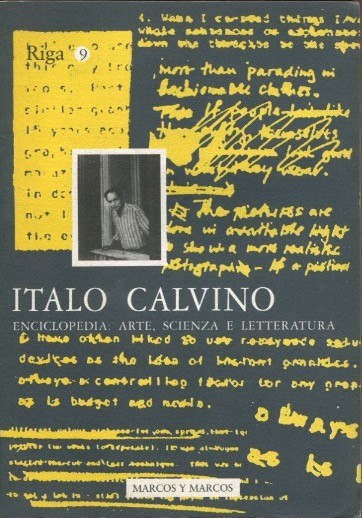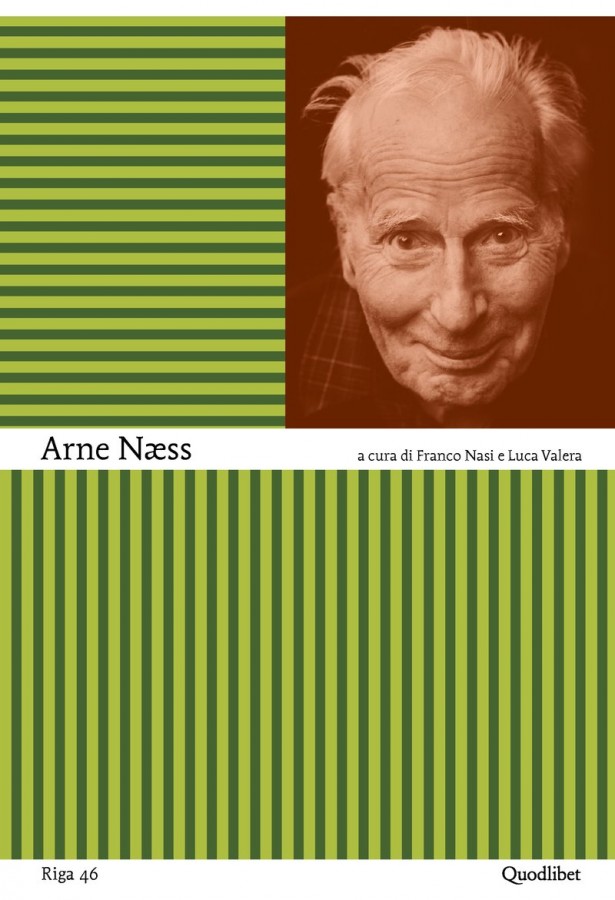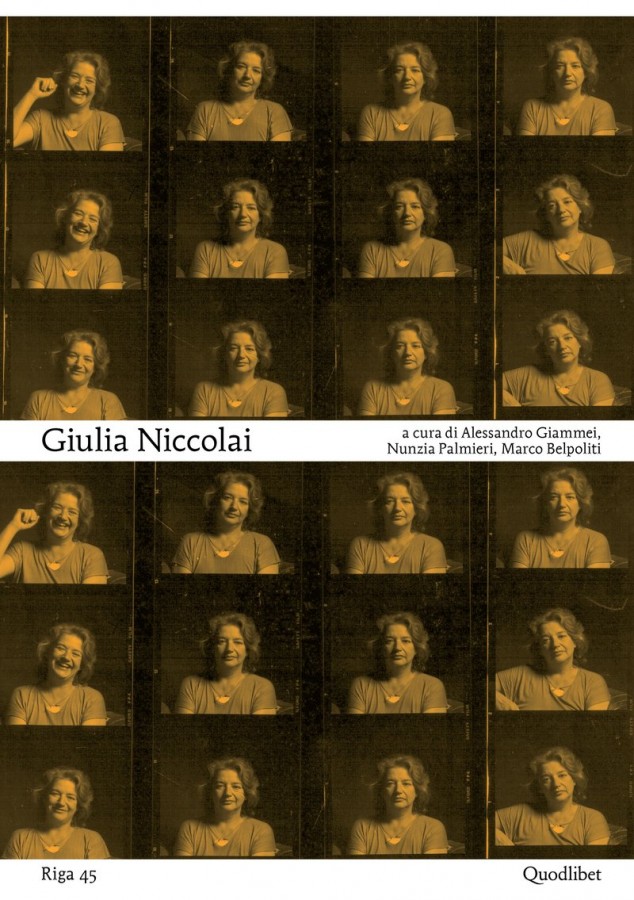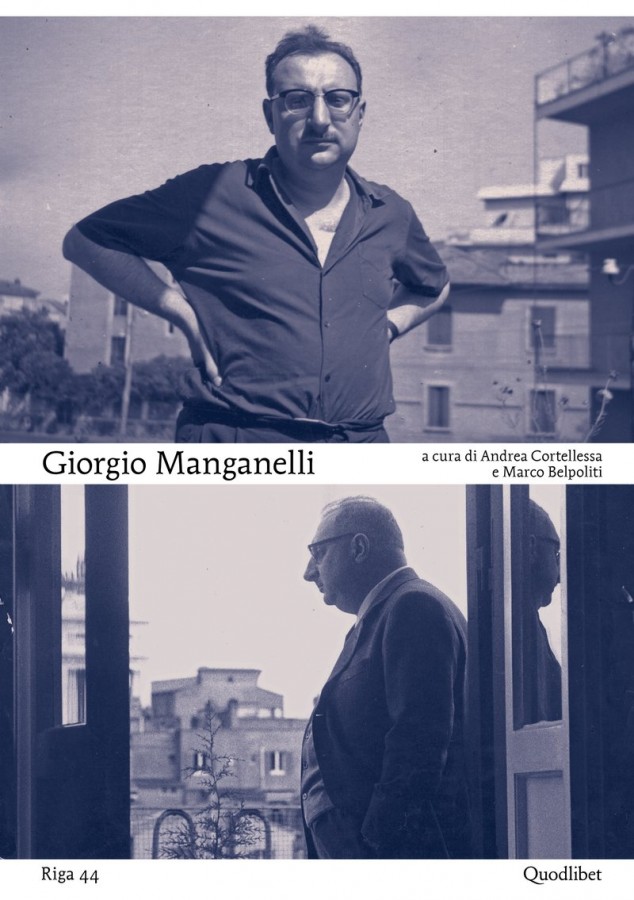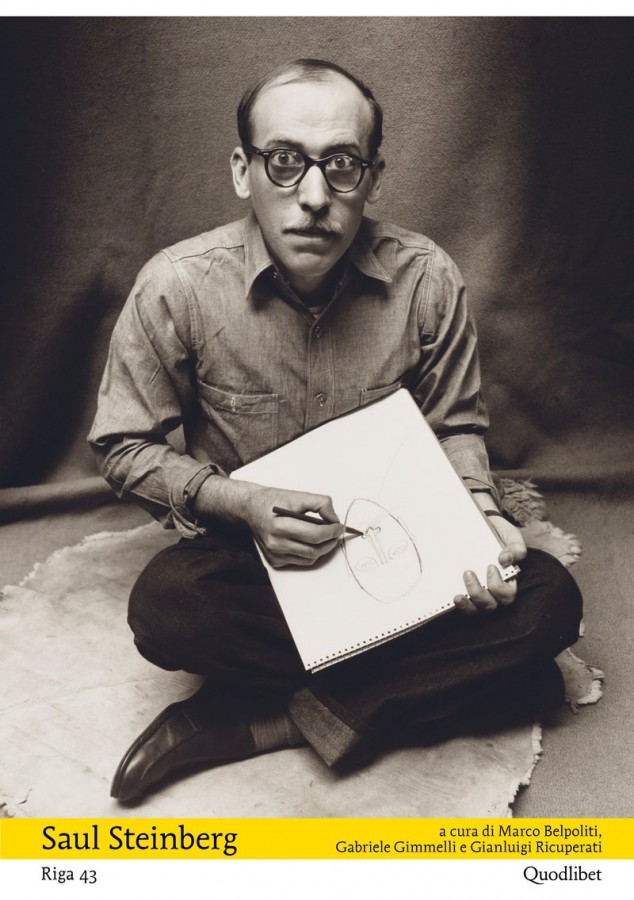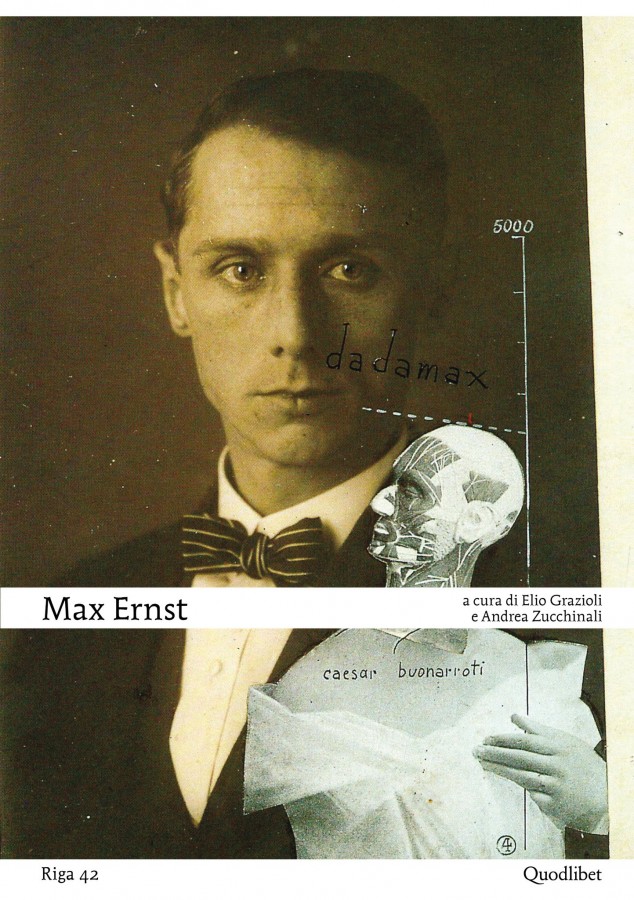M.L. McLaughlin
Soap, coal, a potato
TLS, 04 Ottobre 1996
Soap, coal, a potato
TLS, 04 Ottobre 1996
Amere ten years after his death on September 19, 1985, Italo Calvino’s collected fiction (reviewed in the TLS, September 25, 1992; March 11, 1994; May 26, 1995) and now most of his non-fiction have been pubblished. The first thing that the 3,000-plus pages of collected essays show is that despite occasional pauses in his creative writing (for istance, the periods 1959-63 and 1973-9), there was no letup in Calvino’s literary activity: even durino those years of the crisis of the novel or writer’s block, Calvino never stopped reading, reflecting, writing.
Mario Barenghi has performed ad invaluable service to Calvino scholars by providing in two volumes of Saggi wha the calls an “ample selection” of the many essays, articles and reviews the author wrote over a period of forty years. Barenghi’s introduction, evene though it never articulates precisely the criteria on which he has based his selection, is another bonus, since it is itself the most sensitive essay yet on Calvino the essayist. He is particularly perceptive on imagery: the two collections of essays published in the author’s lifetime - Una pietra sopra (1980) and Collezione di sabbia (1984) - despite their many differences, are linked by the mineral imagery of their titles, the earlier work containing more monolithic statements about literature and politics from the period of the author’s Marxist commitment, the later on consisting of reviews of exhibitions which have little to do with literature, but much to do with art-forms which try to capture reality with a gid but always fail to enclose its granular essence entirely. Throughout the essays, Calvino uses the same laconic, linear style as in his fiction; he detests flashbacks, is fond of disjunctive formulas, binary structures and constant attempts at rephrasing to achieve a more precise wording. Barenghi’s verdict is unimpeachable: Calvino’s prose embraces “sobrietà, precision, and avoidance of abstraction (qualities which have never found their definitive place in the Italian literary tradition)”.
The essays are divided into four major sections. Par One reproduces those two collections published in his lifetime (some of them translated in The Literature Machine), as well as five of the Norton lectures for Harvard which Calvino completed just bifore his death (translated into English as Six Memos for the Next Millennium). One interesting novelty here is the publication of an absorbing opening lecture (which Calvino later rejected) on the beginnings and ends of novels. Predictably, he finds more energy and potential in beginnings than in ends, hence his own obsession with the incipit, which was in fact the original title of If an a Winter’s Night a Traveller. Calvino’s own work exemplifies the five qualities that he eulogizes in Six Memos: lightness and visibilità are apparent in all of his output, rapidità in his preference for short narratives, exactness especially in Invisibile Cities and Mr Palomar, multiplicity in If on a Winter’s Night.
Part Two reprints essays on what Calvino called, in a 1983 lecture in New York, the Written World: on the classics (see the review of Perché leggere i classici, TLS, September 25, 1992), on contemporary authors, on committed litarure fables, publishing, cinema, figurative arts, anthropology. There are, however, some odd lacunae: we are given, undestandably, some but not all of the essays on his favorite authors in English (Hemingway, Henry James, Conrad, Stevenson), but there are several one-off pieces on “English” writers which have been omitted (Orwell, Huxley, Koestler, James Stephens, Yeats, Emily Dickinson). Calvino himself is responsible for other omissions; as Barenghi points out, he wrote few essays on poets apart from Montale, yet one of his projected books in the 1980s was to be entitled “20 poeti”.
Part Three contains articles dealing with the Unwritten World: politics and society (1946-57), world events (1974-80), reportages and travelogues (from his native Liguria to the Soviet Union and United States). The grouping of those first pieces is validated by Calvino’s plans to publish “The Iron Age, 1945-57”, a series of militant articles he wrote from his time as a Communist partisan until his resignation from the party. Part Four put together thirty-one interviews and autobiographical texts. The two volumes are rounded off by an appendix containing important draft passages particularly to the Harvard letctures, and by an exhaustive index which makes interesting comparison with the essay titles.
The Saggi print a 1968 letter in which Calvino declares with typical irony that his main ambition as a young man was to become a minor writer, an artisan rather than a member of the avant-garde. With punning modesty, he adds: “I like making things which close well.” These very qualities of Italian craftsmanship are emphasized in the volume Enciclopedia: Arte, scienza e letteratura. Ist editor, Marco Belpoliti, has assembled a number of items by and about Calvino which stress his encuclopaedic interests and represent a kind of artisan’s workshop: hence apart from twentyfour articles by the author on art, science and literature (nine of which are not included in the collected Saggi), the volume also contains eighteen essays or reviews by yellow “artisans” such as Montale, Gore Vidal, Salman Rushdie, Michel Tournier, Carlos Fuentes, and eight essays by critics who are interested in broader epistemological systems than mere narratology. Perhaps the mosto revealing item in the first section is an early 1975 narrative about Mr Palomar, which was not included in the twenty-seven pieces selected for the book. In it Calvino deals with the criticism that his protagonist’s speculations on waves on a seashore hardly embody an attitude of civic responsibility in the midst of one of the most violent decades of Italian history: “Is it not the case - replies Mr Palomar - that the way in which someone looks at waves, which by itself can only be judged in comparison with other ways of looking at waves, can nevertheless lead u sto a comparison of different ways of existing in the world?” Despite apparances, then, the theme of commitment still lurks in subtexts beneath even the later writings. But as always when dealing with serious statements, Calvino immediately undercuts them with self-mocking irony: “We should point out that we had to deduce the conclusions to Mr Palomar’s sentences from the series of grunts and and stummers which overcome his speech every time he tries to raise the level of his conversation.”
Enciclopedia also includes Calvino’s delightful translation of Francis Ponge’s proes poems on humble objects such as soap, coal, a potato (one of Calvino’s late book projects was one on everyday objects); a piece on the importance of verbal description as a literary exercise; and a brilliantly economical 100-word summary of Robinson Crusoe. Of the essays by yellow writers, the most interesting are Pasolini’s review of Invisibile Cities, Tournier’s speculations on what he terms “italo-calvinisme” (“its firste principle is: never let your feet touch the round”), Salman Rushdie’s review of If on a Winter’s Night, and Natalia Ginzburg’s tale of how in 1948 she and the young Italo went to see Hemingway at Stresa (they told him that their favorite story was “Hills like white elephants”). The volume is framed by photographic, artistic and poetic homages to the author. Belpoliti’s Enciclopedia makes an almost idispensable complement to the Saggi.
Album Calvino is a visual as well as verbal memoir. Some evocative photographs are intelligently distributed by Luca Baranelli and Ernesto Ferrero among a series of autobiographical texts. The childhood photos convey something of the literally hothouse atmosphere in which he grew up in the San Remo of the 1920s and 30s, where his father directed an experimental agronomy institute (he is listed in the Italian Dictionary of National Biography as the firs successful grower in Italy of then exotic plants such as grapefruit and avocados), and his mother was the first woman in Italy ever toh ave a university chair in botany. One photo shows the young Italo doing homework in the background, while his mother transcribes what she ha just observed in a poweful microscope. Although it appears that Calvino at first rebelled against this unilaterary background by optino ofr literature, in fact his scintific interests were merely submerged rater than eradicated. Calvino’s later obsession for classifying phenomena, and his linguistic precision, clearly derive from his scientific upbringing . in fact, this admixture of science and literature has produced probably the three mosto original Italian wirters of this century: Calvino, Carlo Emilio Gadda, and Primo Levi. Also fascinatine are the cartoons he drew in his teens (includine one of Mussolini on horseback which captures perfectly the dictator’s pomposità), some of them published in satirical magazines - indeed his first ambition was to be a cartoonist, and the economy of the vignetta inspires hi own spare, visual narrations.
Both the Album and the Saggi print an important essay on translation, which claims that “translation is an art… Genuine literature, even in prose, always hovers on the borders of translatability in every language. The literary translator is the person who uses every resource to traslate the untranslatable.” Calvino, who himself had tried his hand at producine Italian versions of Conrad, Raymond Queneau and Francis Ponge, often fel that translations of his own works sounded flat and insipid, and would go back to the original both to solve the particolar problem and to learn other things about his own style which the translation had taught him; translation, he paradoxically cocludes, is the proper way to read a text. One presumes he would have been happy toh ave found such a faithful and resourceful translator as Tim Parks, who i salso a novelist in his own right, Numbers in the Dark is Parks’s translation of Prima che tu dica “Pronto” (TLS, March 11, 1994), with the additino of the title story and “The Workshop Hen” frome the 1958 collection of Racconti, plus three late Cosmocomic tales from the 1980s (“The Other Eurydice”, “Implosion” and “Nothing and Not Much”), Presumably these five tales were added to give bulk to an otherwise slight volume, and to avoid having to use the weak title of the Italian editino, “Bifore you say ‘Hello’”.
Again Parks ha produced a faithful, fluent and readable translation, ranging from the clipper dialogues of the early fragmentary fables to the long-winded ramblings of those late stories, includine a deft version of the allusive opening paragraph of “Implosion”: “To esplode or to implode - said Qfwfq - that is the question: whether ‘tis nobler in the mind to expand one’s energies in space without restraint, or to crush the minto a dense inner concentration and, by ingesting, cherish them.” Early reviews of Numbers in the Dark raised the question posed also by some of the essays: should the material an author deems unworthy of book form be published posthumously? The fact is that nearly all of these stories and essays were published (admittedly often in ephemeral newspapers or journals); only the first eight fables in Numbers in the Dark exist merely in manuscript, not printed, form. The general reader will usually be disappointed by the quality of tales and essays that Calvino considered not good enough to appear in a book, as he was such a demandino and reliable critic avene of his own work. But those who are interested in the workings of a great creative mind will find alla of this material helpful and be grateful to the editors concerned: through it we can see how the partisan turned artisan developed into a master craftsman.
Mario Barenghi has performed ad invaluable service to Calvino scholars by providing in two volumes of Saggi wha the calls an “ample selection” of the many essays, articles and reviews the author wrote over a period of forty years. Barenghi’s introduction, evene though it never articulates precisely the criteria on which he has based his selection, is another bonus, since it is itself the most sensitive essay yet on Calvino the essayist. He is particularly perceptive on imagery: the two collections of essays published in the author’s lifetime - Una pietra sopra (1980) and Collezione di sabbia (1984) - despite their many differences, are linked by the mineral imagery of their titles, the earlier work containing more monolithic statements about literature and politics from the period of the author’s Marxist commitment, the later on consisting of reviews of exhibitions which have little to do with literature, but much to do with art-forms which try to capture reality with a gid but always fail to enclose its granular essence entirely. Throughout the essays, Calvino uses the same laconic, linear style as in his fiction; he detests flashbacks, is fond of disjunctive formulas, binary structures and constant attempts at rephrasing to achieve a more precise wording. Barenghi’s verdict is unimpeachable: Calvino’s prose embraces “sobrietà, precision, and avoidance of abstraction (qualities which have never found their definitive place in the Italian literary tradition)”.
The essays are divided into four major sections. Par One reproduces those two collections published in his lifetime (some of them translated in The Literature Machine), as well as five of the Norton lectures for Harvard which Calvino completed just bifore his death (translated into English as Six Memos for the Next Millennium). One interesting novelty here is the publication of an absorbing opening lecture (which Calvino later rejected) on the beginnings and ends of novels. Predictably, he finds more energy and potential in beginnings than in ends, hence his own obsession with the incipit, which was in fact the original title of If an a Winter’s Night a Traveller. Calvino’s own work exemplifies the five qualities that he eulogizes in Six Memos: lightness and visibilità are apparent in all of his output, rapidità in his preference for short narratives, exactness especially in Invisibile Cities and Mr Palomar, multiplicity in If on a Winter’s Night.
Part Two reprints essays on what Calvino called, in a 1983 lecture in New York, the Written World: on the classics (see the review of Perché leggere i classici, TLS, September 25, 1992), on contemporary authors, on committed litarure fables, publishing, cinema, figurative arts, anthropology. There are, however, some odd lacunae: we are given, undestandably, some but not all of the essays on his favorite authors in English (Hemingway, Henry James, Conrad, Stevenson), but there are several one-off pieces on “English” writers which have been omitted (Orwell, Huxley, Koestler, James Stephens, Yeats, Emily Dickinson). Calvino himself is responsible for other omissions; as Barenghi points out, he wrote few essays on poets apart from Montale, yet one of his projected books in the 1980s was to be entitled “20 poeti”.
Part Three contains articles dealing with the Unwritten World: politics and society (1946-57), world events (1974-80), reportages and travelogues (from his native Liguria to the Soviet Union and United States). The grouping of those first pieces is validated by Calvino’s plans to publish “The Iron Age, 1945-57”, a series of militant articles he wrote from his time as a Communist partisan until his resignation from the party. Part Four put together thirty-one interviews and autobiographical texts. The two volumes are rounded off by an appendix containing important draft passages particularly to the Harvard letctures, and by an exhaustive index which makes interesting comparison with the essay titles.
The Saggi print a 1968 letter in which Calvino declares with typical irony that his main ambition as a young man was to become a minor writer, an artisan rather than a member of the avant-garde. With punning modesty, he adds: “I like making things which close well.” These very qualities of Italian craftsmanship are emphasized in the volume Enciclopedia: Arte, scienza e letteratura. Ist editor, Marco Belpoliti, has assembled a number of items by and about Calvino which stress his encuclopaedic interests and represent a kind of artisan’s workshop: hence apart from twentyfour articles by the author on art, science and literature (nine of which are not included in the collected Saggi), the volume also contains eighteen essays or reviews by yellow “artisans” such as Montale, Gore Vidal, Salman Rushdie, Michel Tournier, Carlos Fuentes, and eight essays by critics who are interested in broader epistemological systems than mere narratology. Perhaps the mosto revealing item in the first section is an early 1975 narrative about Mr Palomar, which was not included in the twenty-seven pieces selected for the book. In it Calvino deals with the criticism that his protagonist’s speculations on waves on a seashore hardly embody an attitude of civic responsibility in the midst of one of the most violent decades of Italian history: “Is it not the case - replies Mr Palomar - that the way in which someone looks at waves, which by itself can only be judged in comparison with other ways of looking at waves, can nevertheless lead u sto a comparison of different ways of existing in the world?” Despite apparances, then, the theme of commitment still lurks in subtexts beneath even the later writings. But as always when dealing with serious statements, Calvino immediately undercuts them with self-mocking irony: “We should point out that we had to deduce the conclusions to Mr Palomar’s sentences from the series of grunts and and stummers which overcome his speech every time he tries to raise the level of his conversation.”
Enciclopedia also includes Calvino’s delightful translation of Francis Ponge’s proes poems on humble objects such as soap, coal, a potato (one of Calvino’s late book projects was one on everyday objects); a piece on the importance of verbal description as a literary exercise; and a brilliantly economical 100-word summary of Robinson Crusoe. Of the essays by yellow writers, the most interesting are Pasolini’s review of Invisibile Cities, Tournier’s speculations on what he terms “italo-calvinisme” (“its firste principle is: never let your feet touch the round”), Salman Rushdie’s review of If on a Winter’s Night, and Natalia Ginzburg’s tale of how in 1948 she and the young Italo went to see Hemingway at Stresa (they told him that their favorite story was “Hills like white elephants”). The volume is framed by photographic, artistic and poetic homages to the author. Belpoliti’s Enciclopedia makes an almost idispensable complement to the Saggi.
Album Calvino is a visual as well as verbal memoir. Some evocative photographs are intelligently distributed by Luca Baranelli and Ernesto Ferrero among a series of autobiographical texts. The childhood photos convey something of the literally hothouse atmosphere in which he grew up in the San Remo of the 1920s and 30s, where his father directed an experimental agronomy institute (he is listed in the Italian Dictionary of National Biography as the firs successful grower in Italy of then exotic plants such as grapefruit and avocados), and his mother was the first woman in Italy ever toh ave a university chair in botany. One photo shows the young Italo doing homework in the background, while his mother transcribes what she ha just observed in a poweful microscope. Although it appears that Calvino at first rebelled against this unilaterary background by optino ofr literature, in fact his scintific interests were merely submerged rater than eradicated. Calvino’s later obsession for classifying phenomena, and his linguistic precision, clearly derive from his scientific upbringing . in fact, this admixture of science and literature has produced probably the three mosto original Italian wirters of this century: Calvino, Carlo Emilio Gadda, and Primo Levi. Also fascinatine are the cartoons he drew in his teens (includine one of Mussolini on horseback which captures perfectly the dictator’s pomposità), some of them published in satirical magazines - indeed his first ambition was to be a cartoonist, and the economy of the vignetta inspires hi own spare, visual narrations.
Both the Album and the Saggi print an important essay on translation, which claims that “translation is an art… Genuine literature, even in prose, always hovers on the borders of translatability in every language. The literary translator is the person who uses every resource to traslate the untranslatable.” Calvino, who himself had tried his hand at producine Italian versions of Conrad, Raymond Queneau and Francis Ponge, often fel that translations of his own works sounded flat and insipid, and would go back to the original both to solve the particolar problem and to learn other things about his own style which the translation had taught him; translation, he paradoxically cocludes, is the proper way to read a text. One presumes he would have been happy toh ave found such a faithful and resourceful translator as Tim Parks, who i salso a novelist in his own right, Numbers in the Dark is Parks’s translation of Prima che tu dica “Pronto” (TLS, March 11, 1994), with the additino of the title story and “The Workshop Hen” frome the 1958 collection of Racconti, plus three late Cosmocomic tales from the 1980s (“The Other Eurydice”, “Implosion” and “Nothing and Not Much”), Presumably these five tales were added to give bulk to an otherwise slight volume, and to avoid having to use the weak title of the Italian editino, “Bifore you say ‘Hello’”.
Again Parks ha produced a faithful, fluent and readable translation, ranging from the clipper dialogues of the early fragmentary fables to the long-winded ramblings of those late stories, includine a deft version of the allusive opening paragraph of “Implosion”: “To esplode or to implode - said Qfwfq - that is the question: whether ‘tis nobler in the mind to expand one’s energies in space without restraint, or to crush the minto a dense inner concentration and, by ingesting, cherish them.” Early reviews of Numbers in the Dark raised the question posed also by some of the essays: should the material an author deems unworthy of book form be published posthumously? The fact is that nearly all of these stories and essays were published (admittedly often in ephemeral newspapers or journals); only the first eight fables in Numbers in the Dark exist merely in manuscript, not printed, form. The general reader will usually be disappointed by the quality of tales and essays that Calvino considered not good enough to appear in a book, as he was such a demandino and reliable critic avene of his own work. But those who are interested in the workings of a great creative mind will find alla of this material helpful and be grateful to the editors concerned: through it we can see how the partisan turned artisan developed into a master craftsman.




